- Home
- John Updike
Higher Gossip Page 32
Higher Gossip Read online
Page 32
What a curious thing, after all, genre painting is, beginning with the name—an inexpressive term, the French word for “sort” or “type,” first used in English, according to the OED, in 1849 to designate paintings of ordinary life. Though examples can be found in French painting (Chardin) and American (Winslow Homer, the Ashcanners), the supreme examples belong to the Dutch seventeenth century. The emergent middle class holds up the mirror to itself in saucy eclipse of all those gods and kings who formerly held a monopoly on glorification. A school arises that abandons the religious and mythological subjects which have hitherto formed the nearly exclusive matter of European painting and substitutes, with a vengeance, the daily ordinary, including such ignoble scenes as soldiers getting drunk in a brothel and mothers wiping their infants’ shitty bottoms. Its genealogy can be traced from late-medieval calendar illustrations through the scenes of peasant life by Pieter Brueghel the Elder; but a crucial transition, I think, exists in the Biblical scenes by Caravaggio and Rembrandt and (a bit later) de La Tour that garbed the incidents of Holy Scripture in the particularized faces and intimate gestures of a neighborhood household. These Bible people are people we know: a Protestant assertion that brings the sublime down to earth. Dutch genre painting, according to Peter C. Sutton’s excellent, comprehensive catalogue text, began in the sixteenth century with frankly cautionary illustrations of intemperance and brothel revelry. With gusto Jan Steen depicted The Effects of Intemperance, The Drunken Couple, The Disreputable Woman, The Disorderly Household. The debauches of the Prodigal Son and of Lot with his daughters came in for pointed illustration. Soldiers, a constant Dutch presence in these decades of the Eighty Years’ War, were a favorite topic for “guardroom” paintings that showed them as tipsy and lusty—no military gloire here.
De Hooch, A Merry Company with Two Men and Two Women (detail), c. 1657–58. Oil on panel. (Photo Credit Ill.5)
De Hooch began with brownish, stilted, claustral depictions of “merry company”—rest and recreation, it was called in later days. A sinister though increasingly vague atmosphere of sexual negotiation dominates. In A Merry Company with Two Men and Two Women (c. 1657–58) the painter startles us with, near the center of the canvas, in a quartet of otherwise averted or cursory faces, a woman’s face, sunlit, of vivid expectancy and alertness. Her wrist is being clasped by the man across the table from her, so it is clear enough what she is being alert and expectant about; but here, in a room whose shape and lighting could be straight from Vermeer, de Hooch goes further than he has to and gives us a brilliant, dramatic exploration of a live person—a kind of painterly grace has descended on this hyperanimated woman of dubious virtue. Something of the same abrupt brilliance returns in a late painting of his Amsterdam period, A Man Reading a Letter to a Woman (c. 1670–74). Her red dress and gold skirt attract the sun, but our attention is held by the complex expression on her listening face, patient yet skeptical. The genius of genre painting was that, unlike more hierarchical and stylized and reverent modes, it posed no deflecting alternative to reality.
Rather, it insisted on it—the mundane quotidian in its ambiguous, charged stillness. And, just as sunlight broke through the leaded windows into the whitewashed rooms, a freshly felt glory infused representation. The Dutch virtues—a fierce cleanness and orderliness in the face of threats from monarchal empires and the unruly sea—idealized the patient rounds of daily housekeeping. How central a sense of shelter was to the beauty of Dutch genre painting is indicated by the drab sunlessness of de Hooch’s outdoor paintings of women doing laundry or of families posing for a portrait: there was too much naked light for him; he could not form defining shadows or highlights. His Amsterdam pictures get darker and darker, framing a few spotlit figures. Circumambient light seen from inside, and experienced within: that is de Hooch’s settled manner, and a metaphor for Protestantism’s new version of religious experience.
Plain and Simplified
CHARDIN, at the Metropolitan Museum of Art, New York, June 27–September 3, 2000.
The elegant Chardin show at the Met has been travelling through the turnover of centuries, beginning in Paris last fall, advancing to Düsseldorf and London, and arriving in the New World with an air of triumph. Chardin, whose life stretched from 1699 to 1779, has come to outrank, to modern taste, Watteau and Fragonard at the earlier, rococo end of his century and David at the other, neoclassical end. André Malraux, fifty years ago in The Voices of Silence, delivered this judgment: “Chardin is not a minor eighteenth-century master who was more delicate than his rivals; like Corot he is a subtly imperious simplifier. His quiet talent demolished the baroque still-life of Holland and made decorators out of his contemporaries; in France, nothing can rival his work, from the death of Watteau to the Revolution.” Chardin’s eloquent literary champions range from the philosophe Diderot, who said of the painter’s work that “it is nature itself,” to Proust, who in a study of Chardin unpublished during his lifetime wrote that, “having understood the life of his painting you will have discovered the beauty of life.” Chardin’s later admirers include Manet, Cézanne, van Gogh, Giacometti, Francis Ponge, Julien Green, Lucian Freud, the brothers Goncourt, Vermeer’s rediscoverer Théophile Thoré, and a host of modern critics whose detailed appreciations are surveyed by Colin B. Bailey in his catalogue essay on recent writings on Chardin. The French painter, whose repute and income during his lifetime, while not insignificant, were unspectacular, has been enlisted in the exalted company of Vermeer and Cézanne, the purest of pure painters, whose genre scenes and still lifes, respectively, both impeccably serve and mystically transcend their subjects.
Made expectant by rumors of this high regard, the visitor to the eight galleries the Metropolitan has devoted to Chardin may be surprised (especially if he or she has come from the bright and lively show of modern Paris paintings on the floor below) by the rather relentless brownness of Chardin’s canvases, their skyless subterranean cast; they seem, most of them, rendered with an ascetic palette more Spanish than French. Some of the colors may have sunk: the orange in Rabbit with Red Partridge and Seville Orange (1728–29) is a half-ghost; the plums in Bowl of Plums, a Peach and Water Pitcher (1728–30) are likewise chalky and unfleshed; and the dead thrush in Wild Rabbit with Game Bag, Powder Flask, Thrush and Lark (c. 1730) is a transparent sketch in white and gray. These early still lifes were almost all arranged on the same stone ledge, before an olive-drab stone wall rendered with a fury of broad brushing and scrubby blotches that anticipates Abstract Expressionism—for example, in the two identically sized canvases from the Staatliche Kunsthalle in Karlsruhe, one dated 1728 and the other estimated to be from the same year.
Rabbit fur (“Poor bunnies,” a female museumgoer murmured in passing) functioned for Chardin much as reflections in water did for the Impressionists, as a goad to innovation in technique. According to the posthumous biographical essay by Charles-Nicolas Cochin:
He had never attempted to paint fur before. He realised that he should not paint it hair by hair, or reproduce it in detail. “Here is an object which I must aim to reproduce,” he said to himself. “In order to concentrate my mind on reproducing it faithfully I must forget everything I have seen, and even forget the way such objects have been treated by others. I must place it at such a distance that I cannot see the details. I must work at representing the general mass as accurately as possible, the shades and colours, the contours, the effects of light and shade.”2
His rabbit fur explodes in flurries of dry brushstrokes; the limpness of death erases anatomy and almost returns these fruits of the hunt to the mottled background of stone. Rabbit fur taught Chardin a certain atmospheric mistiness that carried over into his depictions of fruit. His peaches and plums look furry, whereas the cats with which he decorated his early, larger still lifes do not.
Chardin’s name was made, when he was twenty-six or so, with the large-scale Ray (1725–26), a still-startling nature morte dominated by a partially eviscerated ray or skate, whose gi
lls and eyes do an eerie imitation of a smiling, pin-headed man. The surrealism was, I believe, unintentional, but the glistening, arrestingly detailed inner flesh was thoroughly meant. The Ray, when displayed at the 1728 Exposition de la Jeunesse, made a sensation, and it, along with the even more ambitious, heaped Buffet (1728), led to his shortcut admission, the same year, to the Académie Royale de Peinture et de Sculpture. The Académie bestowed upon its members the right to exhibit at the annual Salon, which was attended by the king and the fashionable public. Hitherto, Chardin, a cabinetmaker’s son who lacked the classical education necessary to study at the Académie Royale, had belonged to the run-down, maverick Académie de Saint-Luc. Henceforth, he had the status of a master painter, and the credentials for professional success.
Art as practiced in the ancien régime was a hierarchical department of the idealized monarchy. Four genres of painting were recognized—in order of importance, history painting, portraiture, scenes from ordinary life (genre painting), and still life. With an almost comical strictness their subjects presented a dwindling in social rank: kings and rulers and religious beings were the subjects of the first, the aristocracy and upper bourgeoisie of the second, the common people and servant class of the third, and lowly objects, edible or not, of the fourth. Chardin showed his character by steadfastly sticking, for five years after 1728, to the lowest of the genres, deepening and varying still life and shedding the virtuosic precision and crowding of his seventeenth-century Dutch and Flemish predecessors.
Two paintings of hares from around 1730 achieve, with their more elongate lapine bodies, striking gestural drama on the canvases. All supporting details are forsworn but the game bag and powder flask, instrumental in the chase; nails stretch a single hind leg to the top of the canvas; the colors all revolve close to the fur’s grayish brown. This single-subject minimalism makes a violent effect congruent with dashing streaks and stabs of Chardin’s brush. The merest dry dabble of red shows blood leaked from the creature’s nose or drying in its crotch, reinforcing the hint of crucifixion. A viewer should of course not bring modern squeamishness to Chardin’s depiction of game, ubiquitous and indispensable in this era; yet the limp weight of death figures as a psychological factor as well as the occasion for a baroque diagonal. A Mallard Drake Hanging on a Wall and a Seville Orange (1728–30) shows the feathered body hanging with an askew plump weight from one foot, and extends Chardin’s usual browns and whites into black, which forcefully outlines the bird’s red bill, seen from beneath, as well as tipping the tail and wings. The shadows on the wall—Chardin’s shadows, and the theories of shadow and perception common in the eighteenth century, were the topic of a recent book by the searching theorist of representation Michael Baxandall3—are especially shuddering, like echoes of the drake’s vanished animation. This “majestic” (as the wall caption rightly says) bird reappears, along with one of the hares, in the large Water Spaniel (1730), a commissioned piece that also includes a rifle. According to Cochin, Chardin when a student was told by his teacher, Noël-Nicolas Coypel, to paint a rifle, and discovered in the exercise that “the colours and effects of light presented by nature are difficult to achieve; the reflections that this experiment gave rise to helped to make him what he later became.” Given the importance of “the colours and effects of light presented by nature,” the exact duplication within one painting of figures lifted from others surprises us, and bares a gap between Chardin’s sense of the artist’s craft and our own. He commonly duplicated genre paintings and sold them again—one of the more popular, The Return from Market (1738), no fewer than four times. The borrowed bodies in Water Spaniel, it should be said, are brighter than in the originals, and indeed look spotlit. One of the last Chardins to depict a living animal, this ambitious work is the only one in this show to occupy an outdoor setting; with a curious bush and stage-flat clouds, it looks very artificial.
Chardin, A Mallard Drake Hanging on a Wall and a Seville Orange, 1728–30. Oil on canvas. (Photo Credit Ill.6)
On the other hand, some of the early still lifes seem crude. Two small canvases, loaned from museums in Bordeaux and Houston, both date from 1730 and involve chunks of mutton dangling above an array of utensils and vegetables. Both are painted with short quick strokes and dabbled highlights of white; the meat is scarcely recognizable as such, and an inky darkness underlies the scrubbed-looking spots of color. The Bordeaux canvas, which was not discovered until 1969, appears scarcely finished. He was experimenting with texture; in Still Life with Ray and Basket of Onions (which he reproduced at least six times), the brushstrokes are noticeably dry and granular, even those defining the smooth eggs. (One worries, in fact, about the chemistry of Chardin’s underpainting and his notoriously patient way of letting his works ripen; some of his figural canvases, like Girl with Shuttlecock, 1737, and The Morning Toilet, 1741, are cruelly crackled, and parts of Domestic Pleasures, 1745–46, are alligatored like a Ryder.) In searching out visual truth among humble objects, Chardin disdained trompe-l’oeil smoothness; in Musical Instruments and Basket of Fruit (1732), one of a pair of “overdoors” commissioned for the Paris residence of the Comte de Rothenbourg, the basket and a leaning guitar both shrug, in a Cézannesque manner, at correct perspective, and the musical notation on two crumpled sheets is rendered as lyrical scribbles—what, instead, would a Flemish precisionist have carefully made of those bars of notes!
According to a tale in a 1749 article on Chardin by Pierre-Jean Mariette, a dealer in prints, the painter was executing, for a firescreen, a picture of a saveloy (a highly seasoned sausage) on a dish. When he endeavored to persuade a friend, Joseph Aved, a portrait painter, to accept four hundred livres for a portrait, Aved replied that he would, “if a portrait was as easy to do as a saveloy.” Chardin reflected on this friendly sneer, and turned, around 1732, from still life to the next step up in the ladder of genres, the painting of scenes from ordinary life. The earliest surviving example, Woman Sealing a Letter (1733), is rather gloomy and cluttered, and its setting and costumes border on the luxurious; it was quickly followed, however, by The Washerwoman (1733), which takes us to the servants’ quarters. The little capped ragamuffin blowing soap bubbles feels lifted from a cozily dishevelled Dutch interior, but the washerwoman herself, glancing wistfully toward the painting’s left edge, feels French, and in her ambiguous, abstracted attitude typically Chardinesque.
His attempts at facial animation are halfhearted at best, and his human interactions lukewarm, and yet for all their indifference to signs of conventional charm the paintings were turned into popular engravings; an array of these, taken from the Met’s collection, occupies the last room of the exhibition, and it is striking how the engravers sharpened the poignance and heightened the little actions, including rhyming verses to drive home a moral that is scarcely there. The innocuous servant girl, for instance, in The Return from Market was charged with these verses by the engraver, François-Bernard Lépicié:
From your look, my dear young girl,
I calculate that, recklessly,
You borrow from the housekeeping
The cash you need to clothe yourself.
The gentle housekeeping tensions in The Governess (1739), between a dapper boy with downcast mien and a servant brushing his tricorn hat; the tender vanities of The Morning Toilet, as a mother primps a docile small girl who sneaks a look into the mirror; the domestic pieties of Saying Grace (1740 and 1744): all these were made much of, by the engravers, their caption devisers, and contemporary commentators. A late and especially sensitive sentimental anatomist was Proust, who observed in Saying Grace “the contented hands of the woman setting the table and the ancient tablecloth and the plates still intact after so many years and whose smooth firmness she has felt the resistance of always in the same spot between her careful hands.” Such emotional content is not
necessarily absent from the works: Chardin himself said, according to Cochin’s account, “You use colours, but you paint with your feelings.” Yet comparison of print and painting often shows the print to have crisply heightened a mood cool and enigmatic in the original: one’s eye in the painted Morning Toilet goes less to the little girl’s glance than to the dashingly painted shoe peeping out from the mother’s dress, the lovingly highlighted silver jug so solidly situated on the floor, and the gilded book resting on the red stool in the foreground.
Chardin, Saying Grace, 1740. Oil on canvas. (Photo Credit Ill.7)

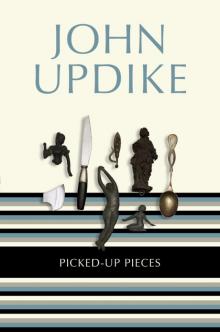 Picked-Up Pieces: Essays
Picked-Up Pieces: Essays Bech: A Book
Bech: A Book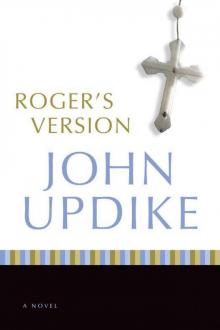 Roger's Version: A Novel
Roger's Version: A Novel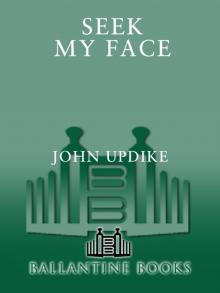 Seek My Face
Seek My Face The Carpentered Hen
The Carpentered Hen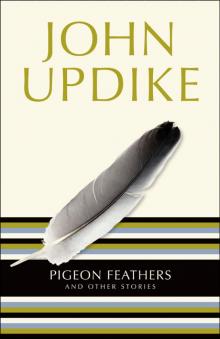 Pigeon Feathers: And Other Stories
Pigeon Feathers: And Other Stories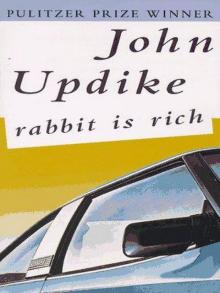 Rabbit Is Rich
Rabbit Is Rich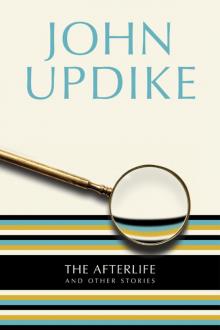 The Afterlife: And Other Stories
The Afterlife: And Other Stories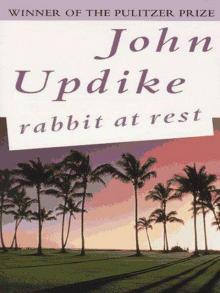 Rabbit at Rest
Rabbit at Rest The Witches of Eastwick
The Witches of Eastwick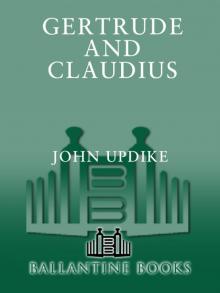 Gertrude and Claudius
Gertrude and Claudius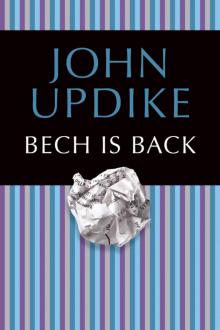 Bech Is Back
Bech Is Back Hub Fans Bid Kid Adieu: John Updike on Ted Williams
Hub Fans Bid Kid Adieu: John Updike on Ted Williams Marry Me: A Romance
Marry Me: A Romance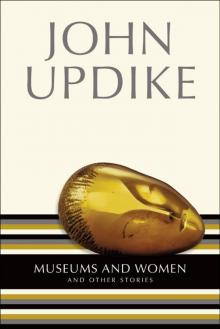 Museums and Women: And Other Stories
Museums and Women: And Other Stories My Father's Tears and Other Stories
My Father's Tears and Other Stories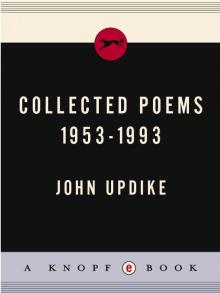 Collected Poems, 1953-1993
Collected Poems, 1953-1993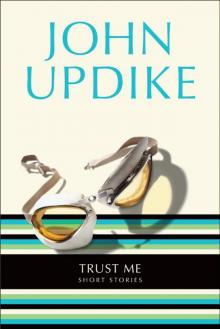 Trust Me: Short Stories
Trust Me: Short Stories Odd Jobs: Essays and Criticism
Odd Jobs: Essays and Criticism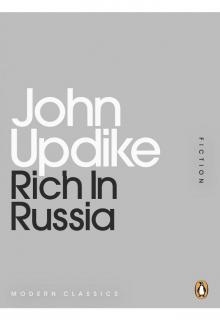 Rich in Russia
Rich in Russia Higher Gossip: Essays and Criticism
Higher Gossip: Essays and Criticism The Widows of Eastwick
The Widows of Eastwick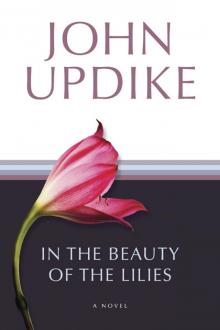 In the Beauty of the Lilies
In the Beauty of the Lilies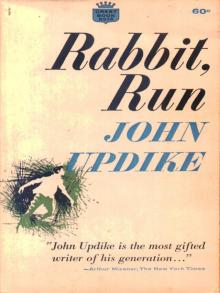 Rabbit, Run
Rabbit, Run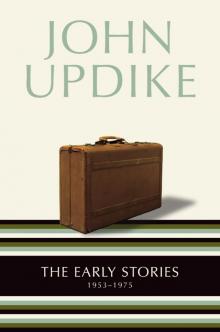 The Early Stories: 1953-1975
The Early Stories: 1953-1975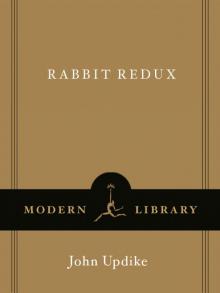 Rabbit Redux
Rabbit Redux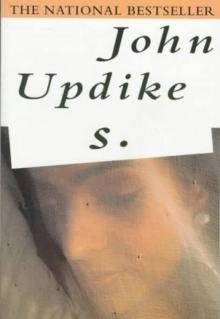 S.
S.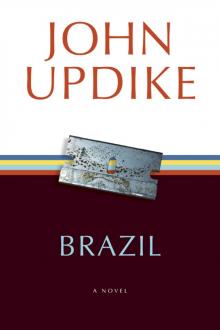 Brazil
Brazil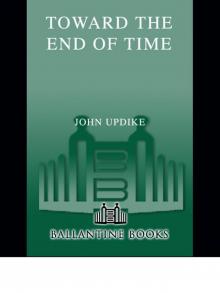 Toward the End of Time
Toward the End of Time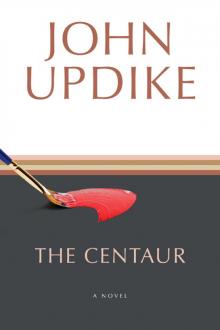 The Centaur: A Novel
The Centaur: A Novel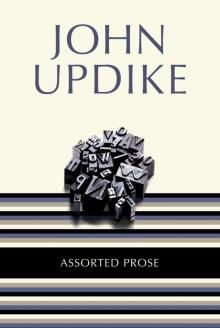 Assorted Prose
Assorted Prose Memories of the Ford Administration
Memories of the Ford Administration Terrorist
Terrorist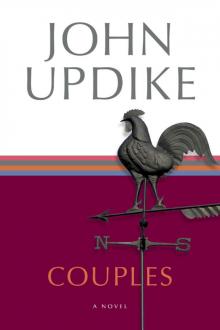 Couples: A Novel
Couples: A Novel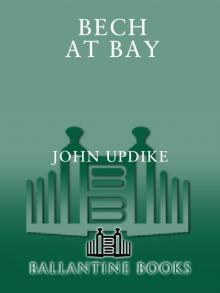 Bech at Bay
Bech at Bay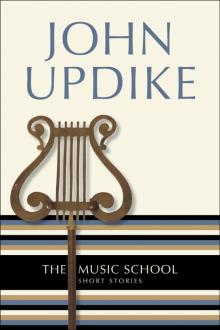 The Music School: Short Stories
The Music School: Short Stories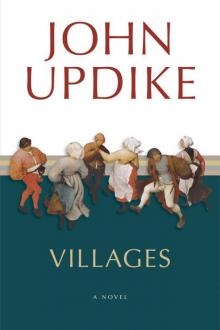 Villages
Villages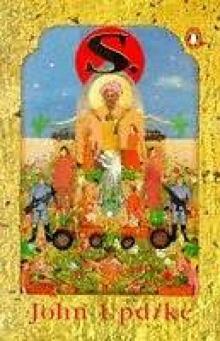 S
S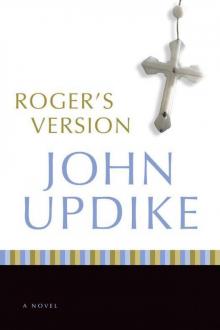 Roger's Version
Roger's Version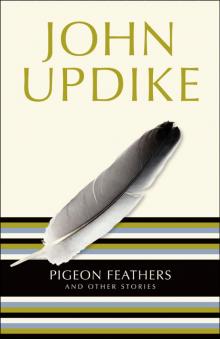 Pigeon Feathers
Pigeon Feathers Higher Gossip
Higher Gossip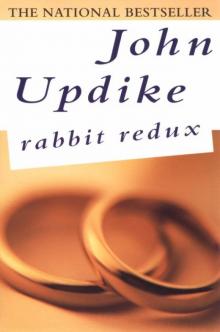 Rabbit Redux r-2
Rabbit Redux r-2 Memories of the Ford Administration: A Novel
Memories of the Ford Administration: A Novel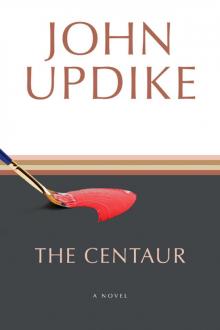 The Centaur
The Centaur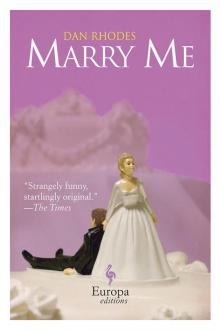 Marry Me
Marry Me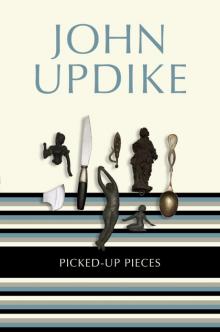 Picked-Up Pieces
Picked-Up Pieces Bech
Bech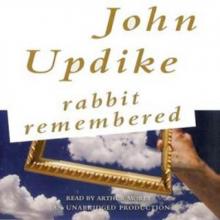 Rabbit Remembered
Rabbit Remembered Trust Me
Trust Me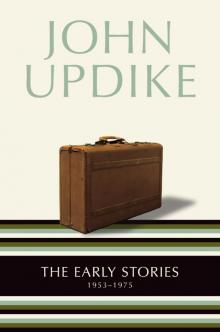 The Early Stories
The Early Stories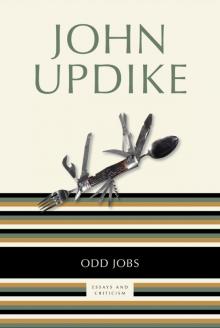 Odd Jobs
Odd Jobs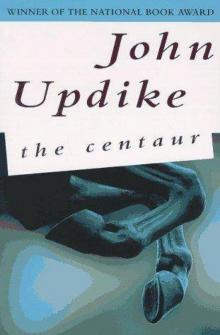 The Centaurus
The Centaurus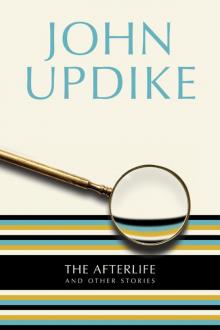 The Afterlife
The Afterlife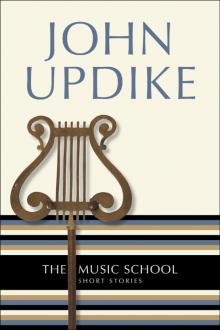 The Music School
The Music School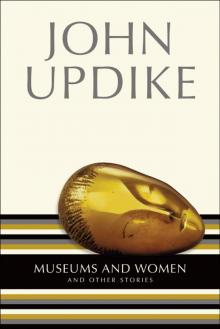 Museums and Women
Museums and Women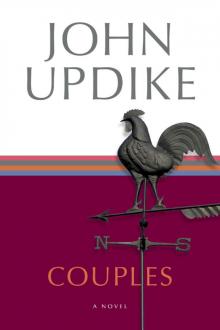 Couples
Couples